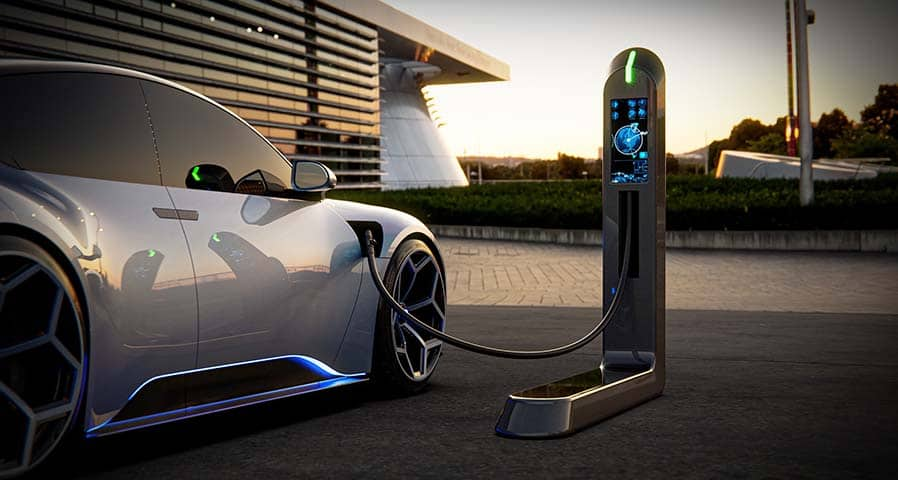In recent years, the rise of electric vehicles (EVs) has sparked a remarkable transformation in how we navigate urban environments. According to a 2023 report from Bloomberg Green, EVs now account for over 10% of global car sales, and this figure is only expected to grow. As cities worldwide grapple with pollution and congestion, smart charging stations have emerged as a pivotal solution in this green revolution. In this article, we’ll explore how these intelligent hubs are reshaping urban electric mobility, making it more sustainable and accessible for everyone.
The Evolution of Charging Infrastructure
The Rise of Smart Charging Stations
Smart charging stations are not just about juicing up your vehicle; they represent a significant leap forward in our approach to transportation. Unlike traditional stations, smart chargers are equipped with advanced software and connectivity features that optimize charging times and energy usage. According to InsideEVs, these stations can communicate with the grid to distribute power more efficiently, reducing strain and minimizing costs.
Key Features of Smart Charging Stations
- Dynamic Load Management: These stations can adjust the power output based on real-time demand, ensuring optimal energy distribution.
- Network Connectivity: Many smart stations are connected to cloud-based platforms, allowing for remote monitoring and management.
- User-Friendly Interfaces: With intuitive apps and screens, users can easily locate, reserve, and pay for charging sessions.
- Renewable Energy Integration: Some stations incorporate solar panels, further reducing their carbon footprint.
The integration of these features is not just theoretical. Cities like Amsterdam and Oslo have already implemented extensive networks of smart charging stations, setting a benchmark for other urban areas to follow.
Benefits of Smart Charging for Urban Areas
Reducing Urban Pollution
With transportation being a significant source of urban pollution, the shift to EVs and smart charging stations is crucial. Wired reports that smart stations help reduce emissions by optimizing energy use and supporting the growth of EVs, which produce no tailpipe emissions.
Enhancing Grid Stability
Smart charging stations play a vital role in balancing electricity demand, especially during peak hours. By communicating with the grid, they can delay charging when demand is high or use stored energy during outages, as highlighted by a study from the International Energy Agency (IEA).
Encouraging EV Adoption
One of the main hurdles to EV adoption is range anxiety. By ensuring that charging infrastructure is accessible and efficient, smart stations alleviate this concern. According to Electrek, cities with robust charging networks see higher rates of EV adoption, as drivers feel more confident in their ability to recharge on the go.
Practical Insights for Urban EV Users
How to Use Smart Charging Stations
- Locate Stations: Use apps like PlugShare or ChargePoint to find nearby smart charging stations.
- Plan Your Route: Incorporate charging stops into your travel plans, especially for longer trips.
- Reserve in Advance: Many stations allow you to book a spot, ensuring availability when you arrive.
- Monitor Charging: Use the station’s app to track charging status and receive notifications when your vehicle is ready.
Where to Find Smart Charging Stations
- Public Parking Lots: Many cities are installing smart stations in municipal parking areas.
- Shopping Centers: Retailers like Walmart and Target are integrating smart chargers in their parking lots.
- Workplaces: Companies are increasingly offering charging as an employee perk, often powered by renewable energy sources.
What to Consider When Choosing a Charging Station
- Charging Speed: Look for stations offering the fastest charging times compatible with your vehicle.
- Cost: Compare pricing models—some stations charge by the hour, others by the kilowatt-hour.
- Compatibility: Ensure the station supports your EV model and connector type.
The Future of Urban Electric Mobility
As we look to the future, the role of smart charging stations in urban mobility will only grow. According to a 2023 MIT Technology Review article, advancements in AI and machine learning will further enhance these systems, enabling predictive maintenance and even smarter energy distribution. Additionally, as cities aim to achieve net-zero emissions, the integration of renewable energy sources into charging networks will become a standard practice.
Conclusion
Smart charging stations are undeniably revolutionizing urban electric mobility. By offering efficient, reliable, and sustainable solutions, they are paving the way for a greener future. As cities continue to embrace this technology, we can expect even greater innovations that will make electric transportation an integral part of urban life. Are you ready to join the electric revolution? Share your thoughts on how smart charging stations have impacted your city, and let’s continue the conversation about sustainable urban mobility.

